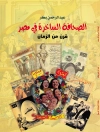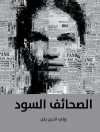Television is one of the most important socializing forces in contemporary culture. This book is a cultural history of prime-time television in America during the 1990s.
- Examines changes that took place in programming, such as the rapid adoption of cable, the proliferation of content providers, the development of niche marketing, the introduction of high-definition television, the blurring of traditional genres, and the creation of new formats like reality-based programming
- Argues that television programmes of the 1990s afforded viewers a symbolic resource for negotiating the psychological challenges associated with the shift from the Industrial Age to the Information Age
- Explores the ways in which television provided viewers with tools for coming to terms with their fears about living in the fast-paced , increasingly diverse, information-laden society of the 90s
Daftar Isi
Contents.
Preface.
1. Television and Social Change.
The Times They Are a-Changin’.
Television as Public Discourse.
2. Life in the Information Age.
The Information Explosion.
Society through the Lens of Technocapitalism.
Social Anxieties in the Information Age.
3. Hyperconscious Television.
Embracing ‘the Future’: The Attitude of Yes.
The Simpsons as Exemplar.
Symbolic Equipments in Hyperconscious TV.
4. Nostalgia Television.
Celebrating ‘the Past’: The Attitude of No.
Dr. Quinn, Medicine Woman as Exemplar.
Symbolic Equipments in Nostalgia TV.
5. Television and the Future.
(Re)Viewing the Small Screen.
Life and Television in the Twenty-First Century.
The Next Great Paradigm Shift?.
References.
Index
Tentang Penulis
Brian L. Ott is an Associate Professor of Media Studies at Colorado State University. He is an award winning scholar and teacher, who has published widely in the area of media studies.












